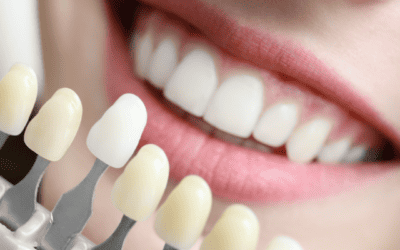Mishari has been very busy of late providing our patients with some lovely new crowns. These are mostly tooth-coloured crowns, but for a variety of reasons, we do still use gold in dentistry.

Gold crown on a molar tooth.
Gold is a precious metal, which has been used throughout history for things such as currency, jewelry, dentistry and for other arts and gifs. Aptly since Christmas is upon us, one of the 3 Kings brought the gift of gold. So, let’s explore this ancient and amazing metal.
Gold Teeth
Gold is associated as a sign of wealth and as such throughout history we have decorated ourselves with it. Even our teeth! Gold has been used in dentistry since ancient times and there is documentation of wealthy women having their front teeth removed and a gold ‘bridge’ inserted. This had no biting function; they used it purely to show off their wealth. Even now we see celebrities with gold crowns in front teeth or grills as a fashion statement. Some cultures favour the use of gold in front teeth.

Gold crowns are a great on back teeth as they are
strong to withstand chewing forces.
Aside from fashion, gold is actually a very useful material in dentistry and has been used for filling cavities long before dental amalgam or silver came along. Gold tooth restorations are often made from a combination of precious metals as pure gold is soft. These alloys allow the best properties of the metals to be used and we end up with restorations that are nearly immune to corrosion and hard enough that they last for many years.
This makes gold an ideal restoration for patients who are wearing down their teeth due to grinding (bruxism).
Gold can be used for fillings (we call these inlays, as they lie within the tooth), partial crowns or onlays, full crowns and bridges (to replace missing teeth). To do this, the tooth is prepared and made ready for it’s new restoration. An impression (mould) of the tooth is taken and sent to the lab. The lab use this to cast the gold restoration, which is custom-made to fit the tooth. While waiting on the lab-work, the tooth is protected by a temporary crown.
Other uses of gold
Gold is actually inert to all body chemicals – not only does it not react to your saliva, it isn’t even changed by your stomach acid. This is why gold can be used in food. You may see it as gold dust or gold leaves especially as decorations on sweets. This isn’t a new trend either. Gold was used by the nobility in medieval Europe as a food decoration. This demonstrated the host’s wealth, but also there was the belief that something as valuable and rare as gold must be good for your health.
In fact, gold is probably the most anciently administered medicine. Today there are many advances in the use of gold for some cancer treatments, detection of HIV/AIDS and in the treatment of rheumatoid arthritis.

Gold jewelry.
The beauty industry has also jumped on the gold bandwagon, selling gold facial products. Legend has it that Cleopatra slept with a pure gold face mask.
One last use of gold that I never knew: it can be manufactured so thin that it appears semi-transparent and can be used in some aircraft cockpit windows. Electricity is passed through it, producing heat, which prevents ice forming. What a clever and versatile material. No wonder dentists love it.


